Excerpts from Jim Conrad's
Naturalist Newsletter
entry dated July 22, 2022, issued from near Tequisquiapan, elevation about 1,900m (6200 ft), N20.565°, W99.890°, Querétaro state, MÉXICO
IPOMOEA LOZANII
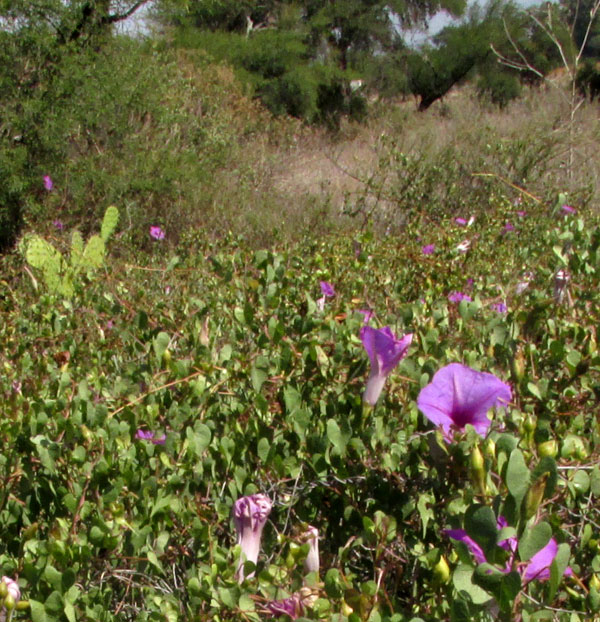
On thin soil atop nearly rock-hard compacted sediment eroded from nearby volcanic hills composed of rhyolite, I was wandering across a slope vegetated with drought-brown grass and scattered shrubs, mesquites and cacti. The above population of morning glory vines caught my eye not only because of the pretty flowers, but also the house-size tangle created by the small-leafed vines growing atop grass, like Kudzu over bushes in the US Southeast.
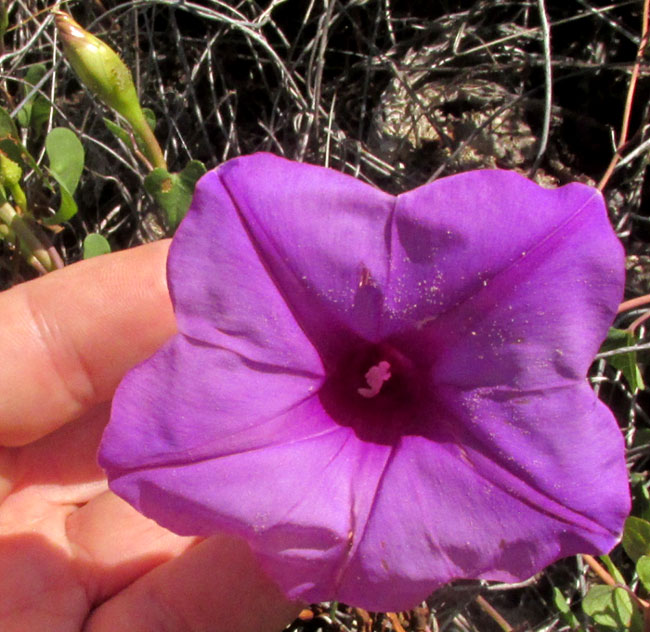
Up close, from the front, the flowers were typical of many of the 1650 or so species of the Morning Glory Family, the Convolvulaceae.
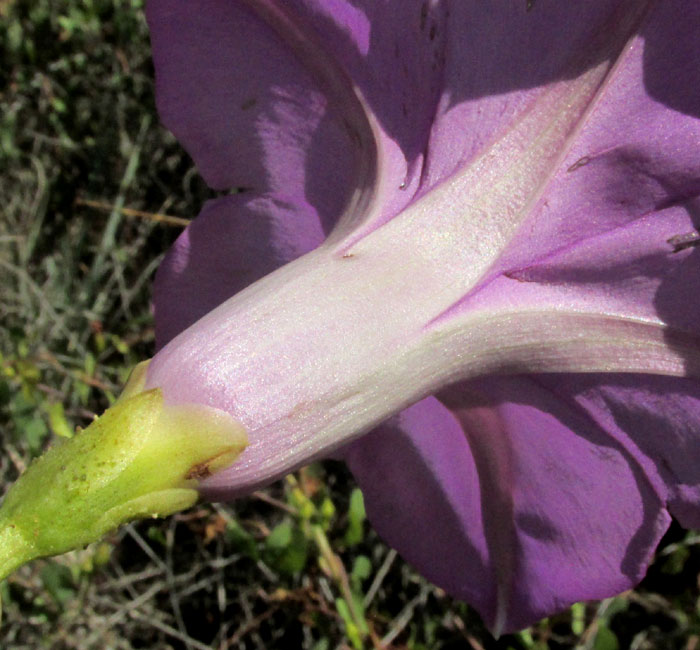
Past experience with morning glories has taught me that, more than the bright corollas, the flowers' green calyxes below the corollas often display important field marks needed for identification. In this case, the calyx was hairless and the broad sepals were rounded at their tips. However, maybe the most important feature was the presence of small wart-like bumps, or tubercles, covering the calyx's otherwise smooth surface. That's something special, though in the picture they're hard to see.
The Morning Glory Family's many species are assigned to about 60 genera, of which the most species-rich and commonly encountered is the genus Ipomoea, with over 600 species. Our flower looked like an Ipomoea but I wanted to be sure, and confirmed the details by opening up a flower, as seen below:
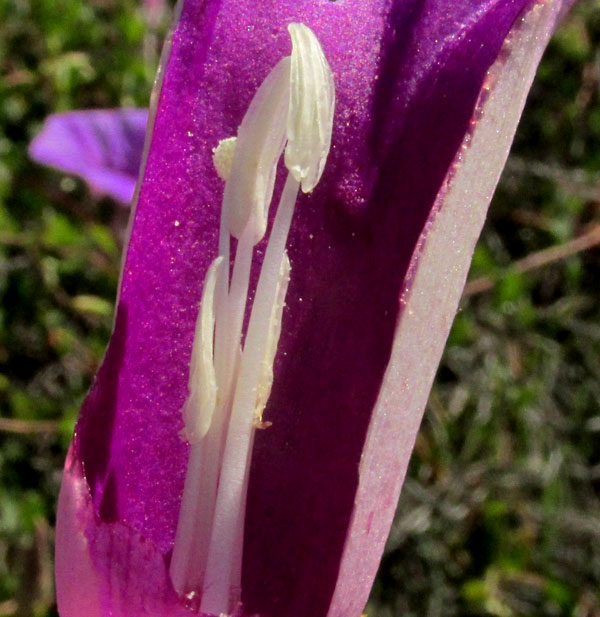
Having five stamens is a feature of the family, but the stamens can be of equal or different lengths, and this species has them of different lengths. In some genera the white, pollen-producing anthers are curved and attached at angles atop the slender filaments, but these anthers are straight and stand erect. The main feature, though, is revealed by the single spherical stigma, half hidden behind the top pair of anthers. Some genera produce long, slender stigmas. Also, here we have just one stigma atop one style, as opposed to two styles with their own stigmas, as in some genera. These details confirm that we have an Ipomoea.
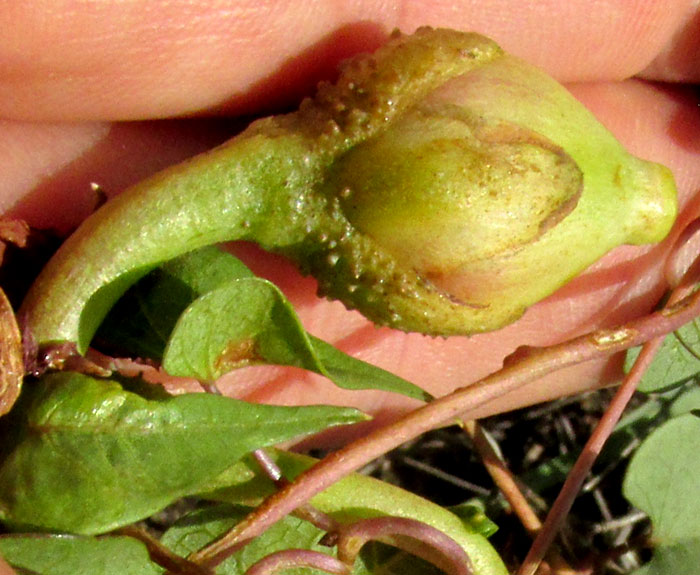
The above immature fruit also is typical of the genus Ipomoea. The unusual tubercles on the sepals are even more conspicuous in this picture than earlier.
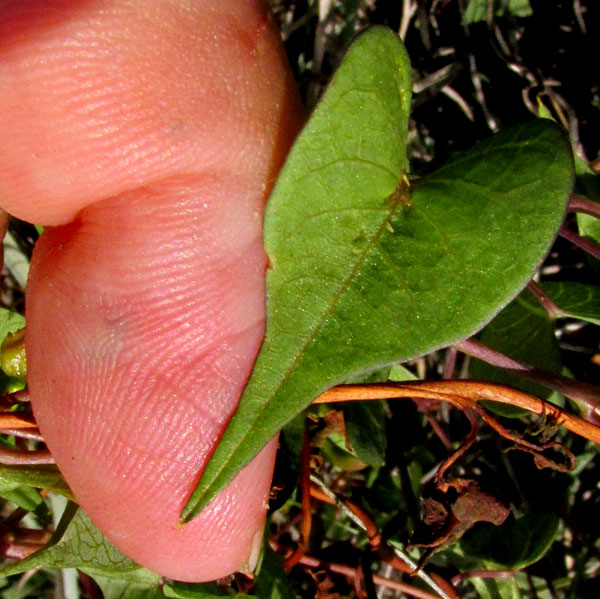
The leaf's "heart shaped" form also was typical, but it was the smallest Ipomoea leaf I've ever seen. Also, the manner by which the blade abruptly narrows at its middle, then continues with a long, narrow point, also is distinctive.
On the brown, horizontal stem below the leaf in the above picture, note that an old leaf has dried up and shriveled. The dead leaf's petiole remains intact, however, and strongly curved. All of this vine's leaf petioles were similarly curved, often performing the service of "hooking" the vine onto grass stems and blades, thus suspending the vine tangle atop the grass. The leaf blades themselves were all curved to one side, hooklike, and the blade halves were partly folded together. In the picture I'm holding the blade open to show the heartshape form, but without my finger the blade halves closed toward one another, forming a blade V-shaped in cross section.
All these details take us to IPOMOEA LOZANII, with no English name because it's endemic just to the drier scrublands and cactusy areas of eastern Mexico, at elevations from 1450-2350m (4750-7700 feet), occurring from the state of Tamaulipas south to about here and the neighboring state of Hidalgo. An evocative Spanish name documented locally for the vine is Tumbavaqueros, meaning "Cowboy-thrower." One visualizes a cowboy on his horse galloping across this open scrubland, his horse's legs entangling in the morning-glory vines, and tumbling.
This species doesn't seem to be planted in gardens, and hardly any information is available about it, other than that it exists, its leaves and flowers are a certain way, and that it's a valid species.
I'm glad that here we can at least focus on what makes it special to an old man stumbling around in the central Mexican highland scrub.